Samsung's new Galaxy S20 brings 5G, major camera upgrades, and big prices
Samsung on Tuesday launched the latest additions to its flagship Galaxy smartphone lineup with the 6.2-inch Galaxy S20, 6.7-inch Galaxy S20+, and 6.9-inch Galaxy S20 Ultra. The phones, which go on sale March 5, mark the first time Samsung will bring 5G capabilities to all of its headlining handsets.
They aren't cheap, either. The base S20 starts at $999, while the S20+ costs $1,199. The S20 Ultra is even pricer than that at $1,399.
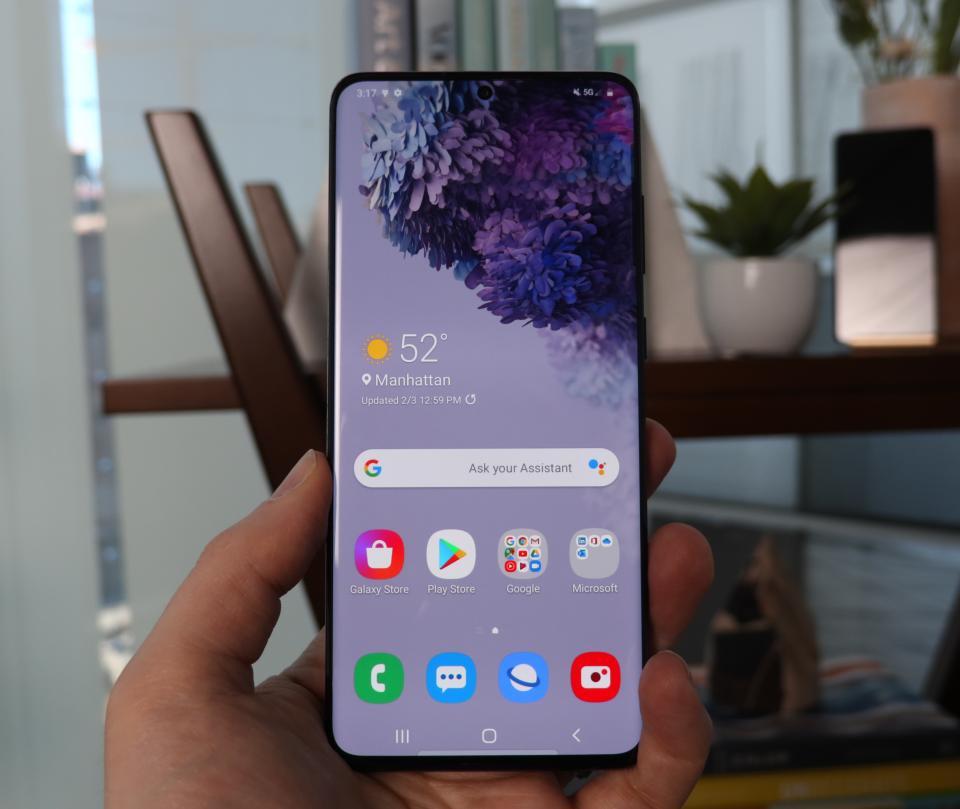
These are the top-line specs for each phone:
Galaxy S20 offers Sub-6 5G
Galaxy S20+ and S20 Ultra get Sub-6 and millimeter wave 5G
Galaxy S20 and S20+ get new 64-MP cameras and 3X optical zoom
Galaxy S20 Ultra sports a 108-MP camera and 5X optical zoom
All three phones get Qualcomm's Snapdragon 865 chip
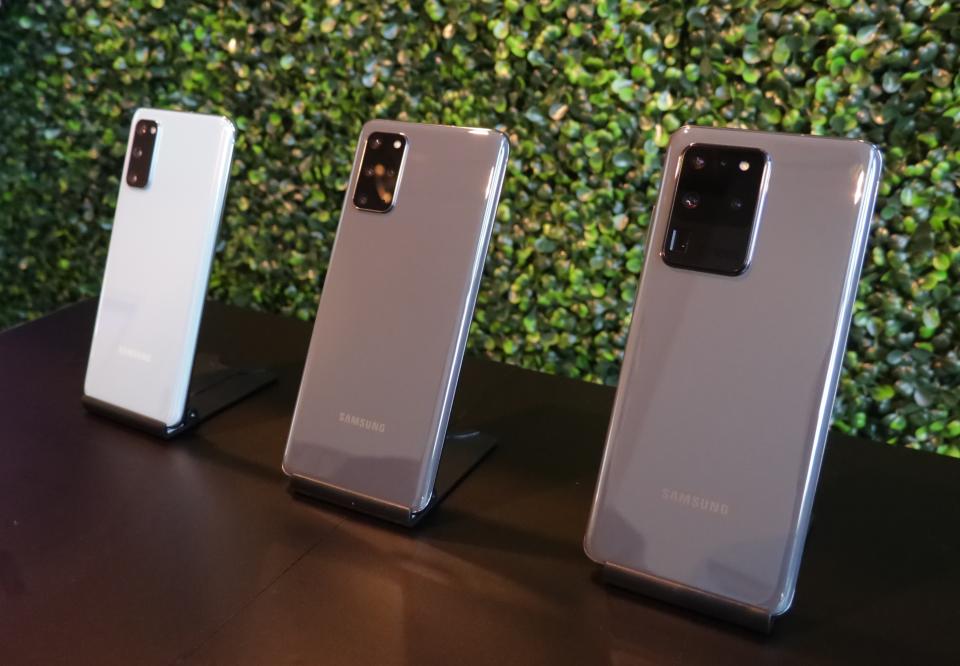
Here come the 5G phones
While each of the Android 10-powered Galaxy S20 phones come with 5G connectivity, they don't all support the same type of 5G. The S20 will support what's called Sub-6 5G, while the S20+ and S20 Ultra will support Sub-6 5G, as well as millimeter wave 5G.
It's a little confusing, but there's an important difference between the two connections. The Sub-6 5G on the S20 refers to 5G networks that run on frequencies below 6 gigahertz. Sub-6 5G is modestly faster than 4G LTE, and offers exceptional range. Still, it isn't anywhere near as fast as the incredible 1 gigabit per second speeds offered by millimeter wave 5G.
Millimeter wave 5G, meanwhile, rides on frequencies in the 30GHz to 300GHz range. Such connections can transfer massive amounts of data at super-high speeds, but are incredibly limited in terms of range. It can't, for instance, pass from the street into buildings, and is unable to penetrate objects, meaning carriers have to put up far more antennas to ensure stable connections.
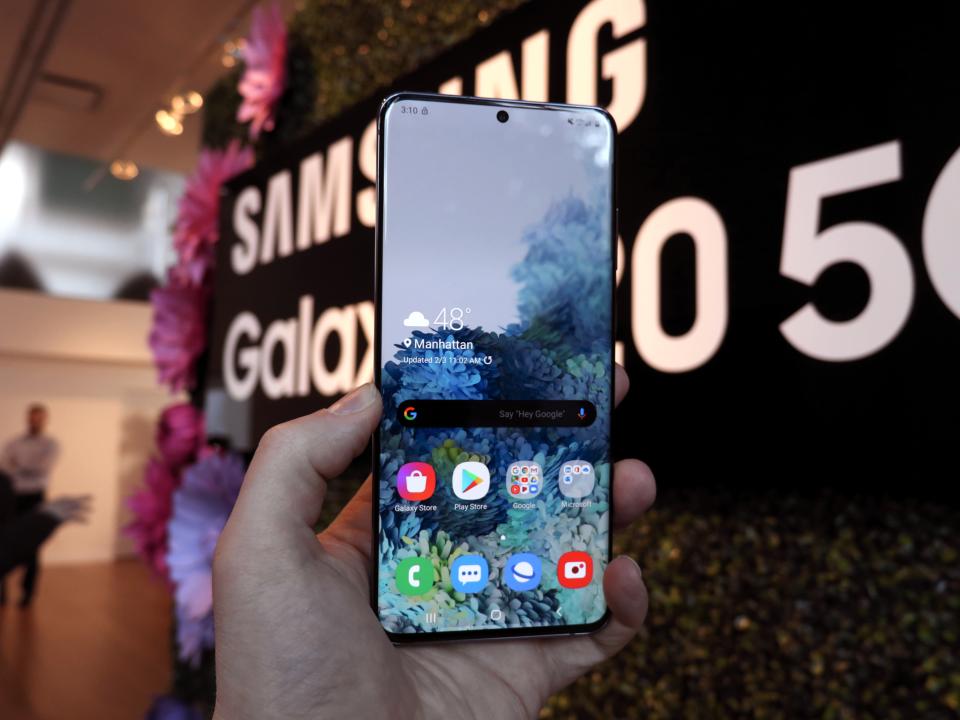
For the S20 lineup, that means the base S20 will get 5G that's slightly faster than 4G LTE, while the S20+ and S20 Ultra will get that flavor, as well as the super-fast millimeter wave version. All of the phones will also use 4G LTE to backup users' data connections in areas where 5G isn't available yet.
Big camera changes
While 5G will undoubtedly be the biggest selling point for the S20 line, Samsung knows that won't grab all consumers. To that end, Samsung has completely reinvented the cameras found on S20, S20+, and S20 Ultra.
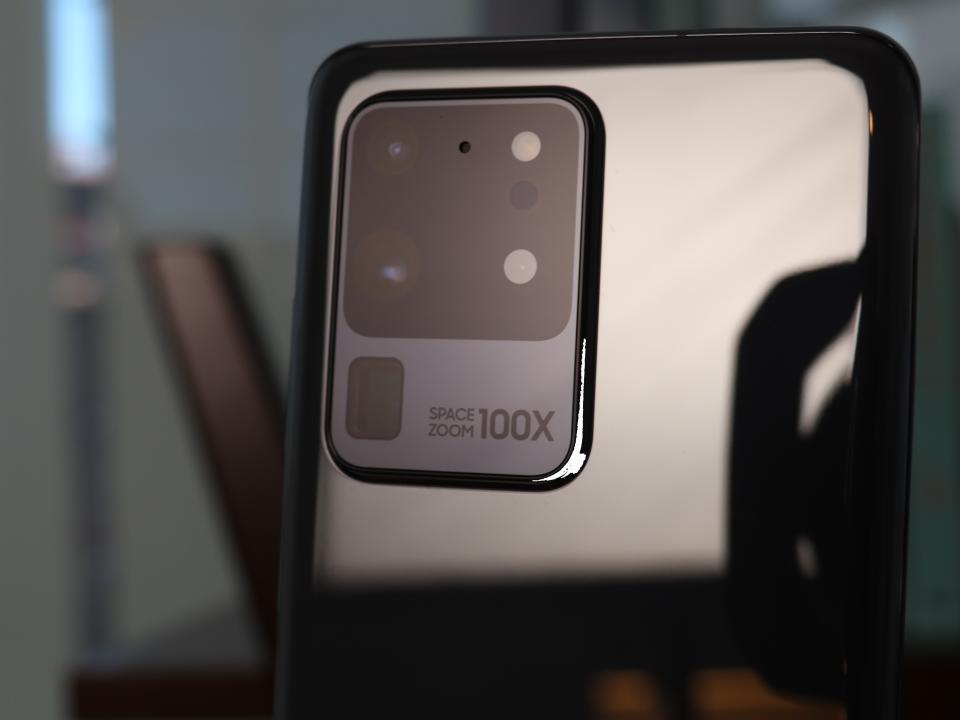
Both the S20 and S20+ get the same 12-megapixel sensors for their wide-angle and ultra-wide angle cameras, and 64-MP sensors for their telephoto cameras. The S20 Ultra, meanwhile, takes Samsung's camera game to a completely other level with a 12-MP ultra-wide angle camera, a 108-MP wide-angle camera, and a 48-MP telephoto camera.
Those larger image sensors also make for better low-light photos, Samsung says. In fact, the S20 Ultra is able to combine its camera's megapixels turning 108 MP into 12 MP, giving it the ability to capture crisper shots in dark settings.
Samsung says the S20 and S20+ also offer 3x lossless zoom thanks to their new sensors and some AI trickery, while the S20 Ultra can capture 10x lossless zoom shots. The Ultra can also zoom as much as 100x, though the image clarity of those photos will be significantly degraded compared to the 10x shots.
Adding to the camera improvements is Samsung's new Single Take mode, which creates multiple versions of your photos from a single shot. Tap the shutter button, for example, and you'll get images, zoomed shots, videos, etc., without having to change modes or shoot multiple photos.
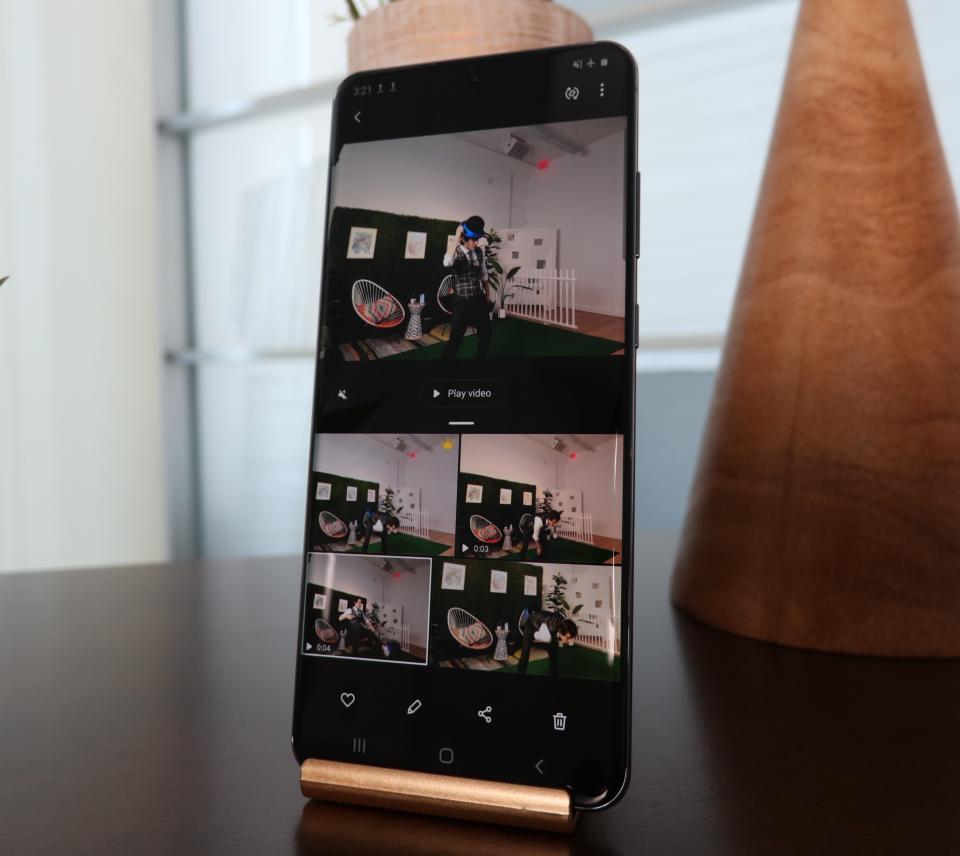
It all adds up to some major changes for Samsung fans, and what will certainly be a major selling point for the devices.
Small design changes, big power
For the S20 line, Samsung has slightly tweaked the phones' design, reducing the curve of the Infinity-O display that cascade off of the left and right sides of the phones.
Then there's the massive camera bump on the S20 Ultra, which will certainly draw looks. With its “Space Zoom 100x” text next to the phone's zoom lens, the Ultra is far from understated.
Inside, the S20 gets Qualcomm's (QCOM) Snapdragon 865 processor, 12GB of RAM, and 128GB of storage. The S20+ gets the same chip, 12GB of RAM, and your choice between 128GB of storage or 512G. Then there's the S20 Ultra, which has the same processor, but can be had with 12GB or 16GB of RAM, and 128GB of storage or 512GB.
The S20 sports a 4,000-mAh battery, while the S20+ gets a 4,500-mAh unit. The S20 Ultra, meanwhile, gets an impressive 5,000-mAh battery. We'll have to see how those power units are able to handle the rigors of 5G connectivity, though. In early tests of 5G connections, Samsung's S10 5G ended up getting so hot at times that it would overheat and switch to 4G LTE.
The future of smartphones
While manufacturers are trying to push foldable smartphones as the newest iteration of our most-used devices, the future of our phones falls squarely on the success of 5G. It took years for 4G LTE service to be ubiquitous across the U.S., and it's definitely going to take time for 5G to reach the same penetration rate.
For early adopters, like those who buy the S20, it will take some patience.
More from Dan:
Got a tip? Email Daniel Howley at danielphowley@protonmail.com or dhowley@yahoofinance.com, and follow him on Twitter at @DanielHowley.
Follow Yahoo Finance on Twitter, Facebook, Instagram, Flipboard, SmartNews, LinkedIn, YouTube, and reddit.


